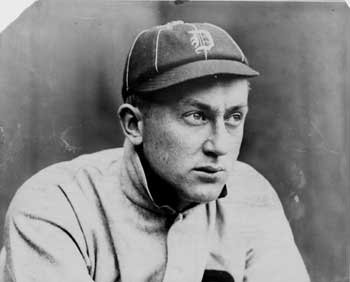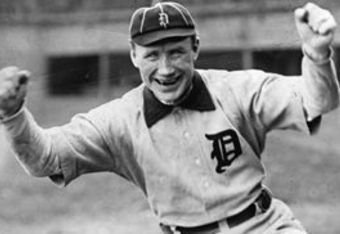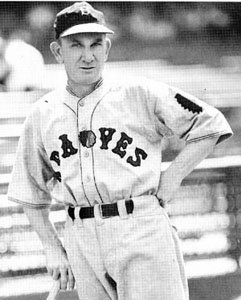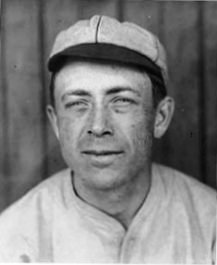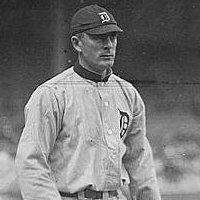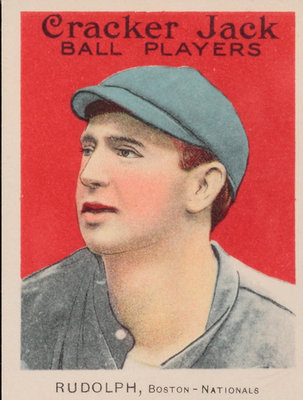When Giants Played on Its Field
On a warm, early spring Friday afternoon, a baseball game was played. Not just an ordinary semi-pro game for the folks in Eastman, Georgia, it was nine-inning game between the Detroit Tigers of the American League and the Boston Braves of the National League. Four thousand avid baseball fans filled every seat and lined the perimeter of the newly constructed ball field to see several of the grand ol’ game’s finest play America’s greatest pastime.
In the days before routine airline travel and obligatory spring training sites in Florida and Arizona, many teams spent their pre-seasons in places like Macon, Augusta and Columbus, Georgia. Two of those teams, the Tigers and the Braves, planned a 17-game series beginning in Columbus, extending through the Carolinas, and ending in Maryland before the start of the 1920 season.
The Boston Nationals took the first three games of the series by good margins of the 3, 5, and 3 runs in Columbus, Moultrie and Valdosta. Eastman was the fourth stop along the way. Dublin, a much larger city, would have normally been on the list. The Braves scheduled games there in 1917, 1918 and 1919. The 1917 game with the Yankees was rained out. The 1918 rematch was unforgettable. The Braves’ 1919 game with the Tigers was canceled when Dublin promoters insisted that Ty Cobb play in the game.
Nimbocumulus clouds rolling in from the west didn’t look so good for the game that day. But, that didn’t stop the fans from plunking down their hard earned, nearly pure silver coins for a fine bench seat or staking out a good spot along the fence.
Promoters of the game in Dodge County set out to improve their fairgrounds by laying out a permanent athletic field inside of the existing horse racing track. The planners, in anticipation of the newest sensation of the day, designed the field to accommodate the landing of the highly popular biplanes, which entertained old and young alike.
To maximize the fan’s view of the game, home plate was situated directly in front of the grandstand, which was divided into sections to optimize ticket prices. In the days and weeks leading up to the game, ticket sales, mainly held in three local drug stores as well as locations in other cities, were exceptionally brisk. Advertisements boldly proclaimed, "There is going to be a real, jam up, honest to goodness ball game with real, sure enough major league players."
The teams, with a squad of sportswriters and photographers tagging along, were scheduled to arrive in five Pullman rail cars at 1:45 p.m. on the afternoon of March 26, 1920. The game’s first pitch was set for 3:00 p.m. sharp. Onto the field they came, real major league ball players. Eight thousand hands clapped. Four thousand mouths cheered. It was time to play ball!
The Detroit Tigers were led by the legendary Ty Cobb. Surviving newspaper accounts of the day never revealed whether or not Cobb was in uniform that day, but he was with the team and ready to play. Bengal manager Hughie Jennings - himself a future member of the Baseball Hall of Fame - was tired of being drubbed by the Beaneaters from Boston. So, instead of trying to make do with a make shift lineup, Jennings sent his line up card out to umpire Finneran with his best players pencilled in. The Tiger lineup featured Harry Heilmann playing at first base. Heilmann, a four-time American League Batting Champion, was consistently among the league leaders in offense and defense. Named to the Hall of Fame in 1952, "Slug" Heilmann is still regarded as one of the top players of the 20 th Century.
Six years earlier in 1914, they called Braves’ manager George Stallings’ team, "The Miracle Braves," for their miraculous climb from the National League cellar on July 18 to a World Championship with their four-game sweep of the seemingly invincible Philadelphia Athletics in the World Series. Stallings, a resident of Jones County, was the first to make Georgia the home of the Braves, when he brought them to Macon, Columbus, and sometimes even to his own home in Jones County for spring training.
Playing at shortstop for the Braves was Walter "Rabbitt" Maranville, a consistent fielder who retired as the all time positional leader at shortstop in put outs. Also present, but playing little for the Braves that year, was Hank Gowdy. Gowdy, who went on to play 21 seasons, played for the "Miracle Braves" and was forever known as the first major leaguer to enlist in the Army in World War I. Known more for his glove than his bat, Gowdy lost many bids for election to the Hall of Fame.
Manager Jennings sent George "Hooks" Dauss to the mound in an effort to prevent a fourth straight loss to their traveling mates. Dauss, whose 221 wins for the Tigers in 15 seasons is a franchise record, garnered 21 of his victories in the previous season. Stallings countered with his old reliable, Dick Rudolph. Rudolph, the sole remaining pitcher from the 1914 squad, started the first game of the 1914 World Series and baffled Connie Mack’s hapless Athletics with his elusive, and then legal, spitball pitches.
The Braves quickly appeared that they were going to run away with yet another game, jumping out to a two-unearned run lead in the bottom of the first inning. Dauss settled down. Going back to his 1919 form, the curveball ace held the Braves scoreless going into the top of the 4 th stanza.
Ralph "Pep" Young, exceedingly efficient at getting on base, led off the top of the 4 th for the Tigers with a base on balls. Sammy Hale, who hailed from Glen Rose, Texas, flied out. Bobby Veach, the all time Major League leader in putouts for a left fielder and the first Tiger player to ever hit for the cycle, doubled. Veach never stopped running. When a "dead duck" throw went wild, Veach followed Young home to tie the game at 2-2.
Dauss pitched one final inning until he was relieved by Ernie Alten in the 5 th . Alten, who shut out the Braves for the rest of game, had little luck in the regular season when posting a pathetic 9.00 ERA in his only year in the Majors.
In the top of the 6 th inning, Young once again led off, this time with a solid single. Sammy Hale, who led the AL in sacrifice hits that season, sacrificed himself, driving Young to second base. Not wanting a repeat of another Veach (2-3) hit, Boston pitcher, "Handsome Hugh" McQuillan, intentionally walked the Tiger outfielder, who stands alone in baseball trivia as the only player ever to pinch hit for Babe Ruth.
Harry Heilmann, who sported a lifetime batting average of .342 and who along with Ted Williams were the last two AL batters to post a .400 plus batting average, disappointingly flied out. With two runners on and two outs in the inning, Babe Ellison, whose best playing days were ahead of him as a great player in the Pacific Coast League, doubled, driving in both Hale and Veach and sending the Tigers to a 4-2 lead, a margin which they would hold until the end of the contest.
Alas, the game came to an end. The exhilarated crowd scattered into the countryside. The Braves’ streak was over. The teams met in Macon on Saturday and again in Atlanta on Sunday. Both teams finished next to dead last in their respective leagues, each more than 30 games out first place. Ty Cobb, in the twilight of iconic career, suffered a leg injury and missed 40 games that year. It would the last of George "The Miracle Man" Stallings’ 14 seasons at the helm of a major league team.
All of that was lost on those four thousand fortunate baseball fans, who for the most part, saw their first and only major league game on that March day when giants played on their field.
Internet gems
- Casinos Not On Gamstop
- Non Aams Casino
- Casinos Not On Gamstop
- Non Gamstop Casinos
- Casinos Not On Gamstop
- UK Betting Sites
- Non Gamstop Casinos
- Casinos Not On Gamstop
- UK Online Casinos Not On Gamstop
- UK Casino Not On Gamstop
- Non Gamstop Casinos UK
- Casino En Ligne France
- Non Gamstop Casinos
- Sites Not On Gamstop
- I Migliori Casino Non Aams
- Casino Sites UK
- Casino Not On Gamstop

